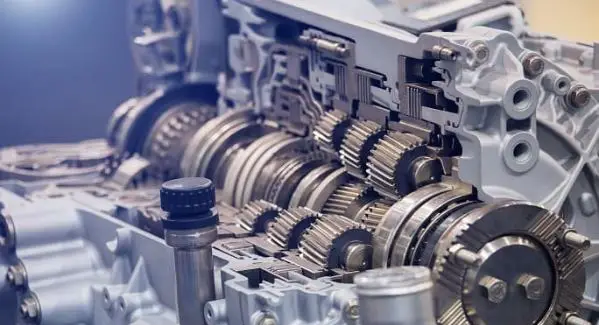If you own a car, you have probably heard your mechanic or others talk about the transmission. In fact, it is one of the most important parts of your vehicle.
But what is a transmission and how does it work? Keep reading to find out.
What Is a Car Transmission
Car transmissions are a critical component of almost any automobile. They allow the engine to run at different speeds.
Essentially, the transmission’s main purpose is to transfer power from the engine to the wheels of your vehicle.
Modern transmissions may use various technologies, such as automatic and continuous variable transmissions, but their primary purpose remains the same – to efficiently convert engine power into traction at the wheels.
How Does A Car Transmission Work
A transmission is a mechanical device that transmits power from the engine to the drive axle of your car. It works by converting rotational motion into linear motion, which is then used to move the wheels of your car.
It does this by using gears that mesh with each other, and as the car moves, the gears rotate and turn the driveshaft. This in turn powers the wheels and makes the car go forwards or backwards.
Also, your transmission has several different gear ratios, each designed to give the car different levels of torque and power. When you shift gears, the transmission shifts a set of gears inside to connect the engine’s output to the wheels at a different ratio.
This is how you can change your speed and acceleration without over-revving your engine.
Importance of Regular Servicing
The transmission is an integral component in a car’s performance and should be properly maintained for reliable and efficient operation.
Otherwise, you may experience the frustration of issues such as grinding sounds, strange acceleration, or difficulty shifting gears. If this happens, it’s important to take your vehicle to a qualified mechanic as soon as possible rather than attempting a DIY solution.
Regular servicing of the transmission helps ensure your car runs in tip-top shape and can prevent costly repairs or even a complete replacement down the line.
As part of the service, the transmission fluid may be replaced to keep it clean which allows it to lubricate all the necessary parts, as well as to get rid of contaminants like debris.
If left unchecked, contaminants can cause significant damage to the transmission leading to early retirement or worse yet completely ruining your whole vehicle.
This is why all drivers should make sure they are familiar with their vehicle’s maintenance schedule and know when it’s time to have their car checked out for optimal performance.
Types Of Transmissions
One of the key components when choosing a vehicle is the type of transmission that it uses.
While there are variations, transmissions effectively convert the torque from an engine into power and movement for your vehicle. Also, the transmission controls the gear ratios.
The selection of which gear ratio to use can be either automatic or manual.
Automatic Transmissions
These days, automatic transmissions are the most common type of transmission because they offer convenience and simplicity to drive.
Automatic transmissions sense engine speed and use complex hydraulics to make necessary adjustments which help ensure that your car runs smoothly.
They do this by using fluid pressure to shift gears which makes these vehicles easier to operate than those with manual transmissions.
Manual Transmissions
On the other hand, manual transmissions require drivers to shift gears themselves in order to adjust power output. This makes them more labour-intensive but also gives the driver increased control over acceleration and gear selection.
It is also important to note that manual transmissions require the driver to use a clutch in addition to a gearshift in order to change from one gear to another.
Which Is Better
In essence, each transmission offers pros and cons. The type of transmission you prefer will depend on personal preference, budget and how the car is intended to be used.
Manual transmissions typically are more affordable but also require extra skill and attention from drivers when using them.
If you prioritize convenience, then automatic may be ideal. However, if you prioritize control, then manual could be better suited for you.
Regardless of what kind of transmission you choose, investigating key specs can help inform your decision so you choose a car that works best for your needs.
Summary
The transmission is a vital part of your car. As such you should keep it properly maintained to ensure it functions correctly.
If you’re having trouble with your car’s transmission, the best course of action is to take it to a mechanic for diagnosis and repair.
By understanding the basics of how transmissions work, you can ensure that your car is performing at its best.
Go Home








